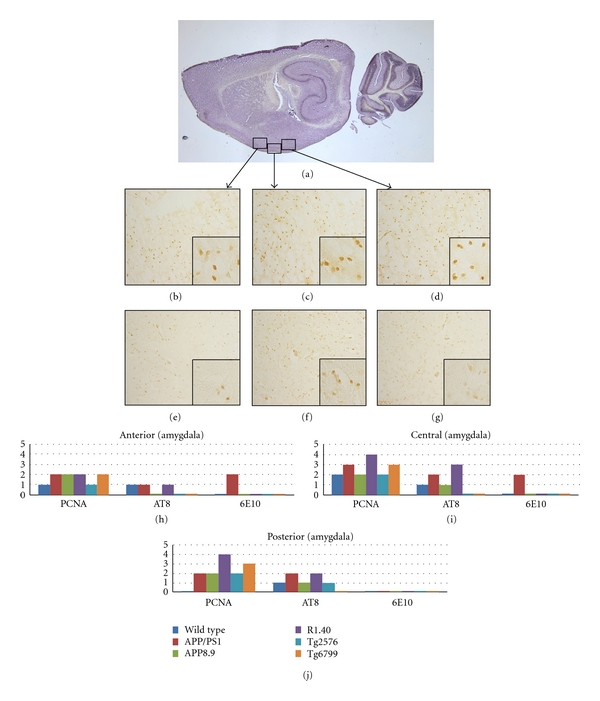Figure 3.

Comparison among the mouse lines studied with respect to the presence of cell cycle events (PCNA), tau-phosphorylation (AT8), and beta-amyloid plaque deposition (6E10) in the amygdala. (a) Sagittal section of a wild-type mouse brain indicating the approximate location of the amygdala. The three black boxes indicate the regions identified as anterior (left), middle (center) and posterior (right). (b)–(g) Representative fields illustrating the involvement of cell cycle processes in the three regions. The insets are representative fields shown at higher magnification to illustrate the qualities of the cell cycle staining. Anterior amygdala for R1.40 (b) and wild-type (e) mice contains the lowest density of CCEs. Middle regions of the amygdala in R1.40 (c) and wild-type (f) mice show increased staining in most models. Posterior amygdala in R1.40 (d) but not wild type (g) animals also show cell cycle activity. (h) Quantification of the extent of immunostaining for the cell cycle, phospho-tau, and beta-amyloid plaques in the five transgenic models plus wild type.
